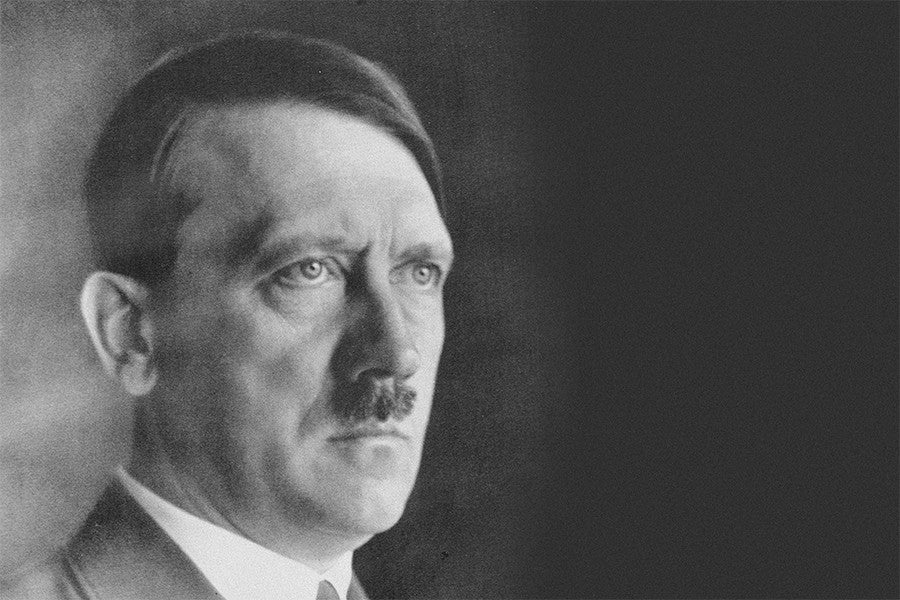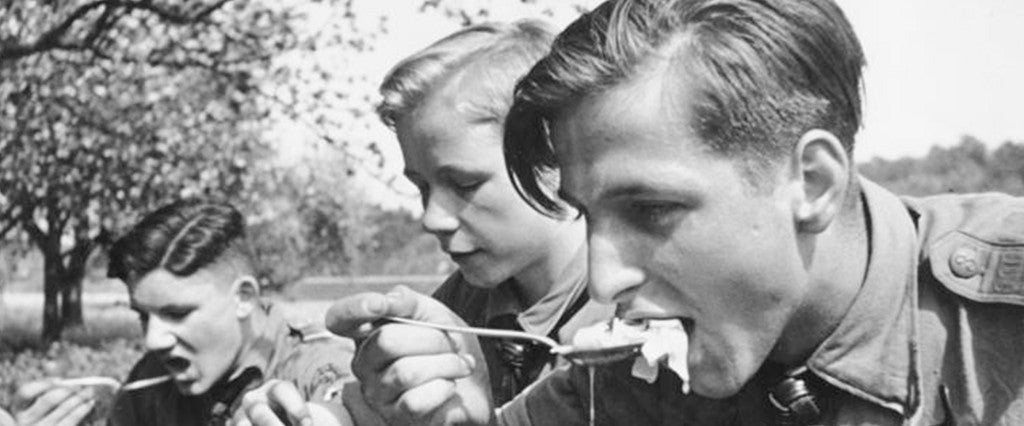Eighty percent of the hipster clients who enter Tomcats Barbershop in Williamsburg, Brooklyn leave with a trendy haircut called the “undercut.” This style, also known as the “high and tight,” involves the sides being buzzed short or closely shaved while the hair on top is left longer. “If I describe the cut to clients but they can’t really imagine it at first,” says David Arce, a barber at Tomcats, “I’ll say, ‘Oh, you want the Hitler Youth?’ People then immediately get it.”
Although Hitler had the most infamous version of the cut, the style developed well before his rise to power. It was popular among working-class people and gangs like the Peaky Blinders during the late 19th century. In the early 20th century, amid the opulence of the Edwardian era, middle-class and wealthy gentlemen also began adopting the cut, and its popularity grew during the Great War and into the Jazz Era. Despite its already being the style du jour, Adolf Hitler and other high-ranking men in the Nazi party made it notorious, with many soldiers in the Wehrmacht following suit in the 1930s through the mid-1940s.

After World War II, the undercut lost its appeal — after all, no one really wanted to don Hitler’s look — but the style was revived in the 1980s by new wave aficionados, and then by youth in various skater, punk, and skinhead subcultures. Due to its sordid past, it was nicknamed the “Hitler Youth cut,” but that didn’t stop anyone from asking it for it at the barbershop when it then made a resurgence in mainstream hipster culture in 2010.
Asked if it might be considered insensitive gallows humor to associate a haircut with Nazi Germany, Arce responds, “I’m only joking when I call it the ‘Hitler Youth’, of course.” It’s not only the haircut’s dark past that’s the issue. Today, it’s sported by many members of the National Policy Institute, a white supremacist think tank based in Virginia. Richard Spencer, the president of the institute, sported the coif along with a three-piece suit as he hollered “Hail Trump” to a crowd during the 2016 presidential election.

Nowadays, it can be difficult to visually separate the alt-right from their hipster doppelgängers. Some media outlets been quick to note the movement’s “dapper” presentation—Mother Jones, for example, suggested that Spencer has “prom-king good looks” and “rock star status,” while the Los Angeles Times called him the “up-and-coming intellectual voice of the movement.” In other words, the media ran with what was probably Richard Spencer’s plan all along: to make racism, xenophobia, transphobia, and anti-feminism more palatable by rebranding it as trendy and nonthreatening.
Not everyone considers the dark history of the styles they wear, they just wear them, especially one as pervasive as the undercut. “Only one or two [of my clients] ever referred to it as the ‘Hitler Youth,’” says Magdalena Hairrari, owner of the Hairrari and Manetamed barbershops in New York. “I don’t think people should associate any cut with the Nazis.”
Arce agrees: “People all around the world have the undercut. In Japan, in Germany, everywhere. People had it in World War II, and it wasn’t only the Nazis. Americans had it, too. I have one, and people’s father’s fathers had it. ‘Hitler Youth’ is only one name for the cut. In the shop I usually call it The Fury, and I also call it the World War II Tanker. Everyone loves the cut.”
Dawnn Karen, founder of the Fashion Psychology Institute, which aims to apply academic discipline to the world of fashion, believes that while it’s probably subconscious, fashion producers such as Hairrari and Arce are fighting back against white supremacist fashion appropriators by continuously shaping and redefining fashion for fashion’s sake.

“Perceptions starts to change in insidious ways — in this case it’s very subtle — the hipster crowd is inspired by people like David Beckham and Macklemore to wear it, but with Richard Spencer there becomes an interesting juxtaposition — a battle between conformity and obedience.”
Because the undercut is perceived so differently by the various groups of people who have adopted it, barbers may want to be aware of the psychology behind the styles they produce. “In everyday situations,” Karen explains, “we usually don’t have this juxtaposition between perceptions. Usually, if you wear a pilot uniform, you’re considered a captain of the crew.”
Hipsters can separate themselves from white supremacists simply by being mindful of varying cultural norms within different settings, and barbers can advise their clientele accordingly. For example, Karen suggests, “if a person wore the haircut in a state known for its white supremacist activities, he or she might be considered a white supremacist.” Therefore, a barber might want to advise a client to not be so cavalier when choosing the style, and to choose against donning it in states showing growing populations of hate groups, like Pennsylvania.
For now, both Arce and Hairrari will continue to focus on making people look and feel good by offering their clientele the undercut. Hairrari says that soon enough, she’ll most likely switch things up based on trends. “We change just like the weather — sometimes chicken, sometimes feather.” Arce feels similarly: “It’s apples and oranges. It’s not a symbol of hate — it’s just a fashion statement. If you don’t like it, don’t get it.”
